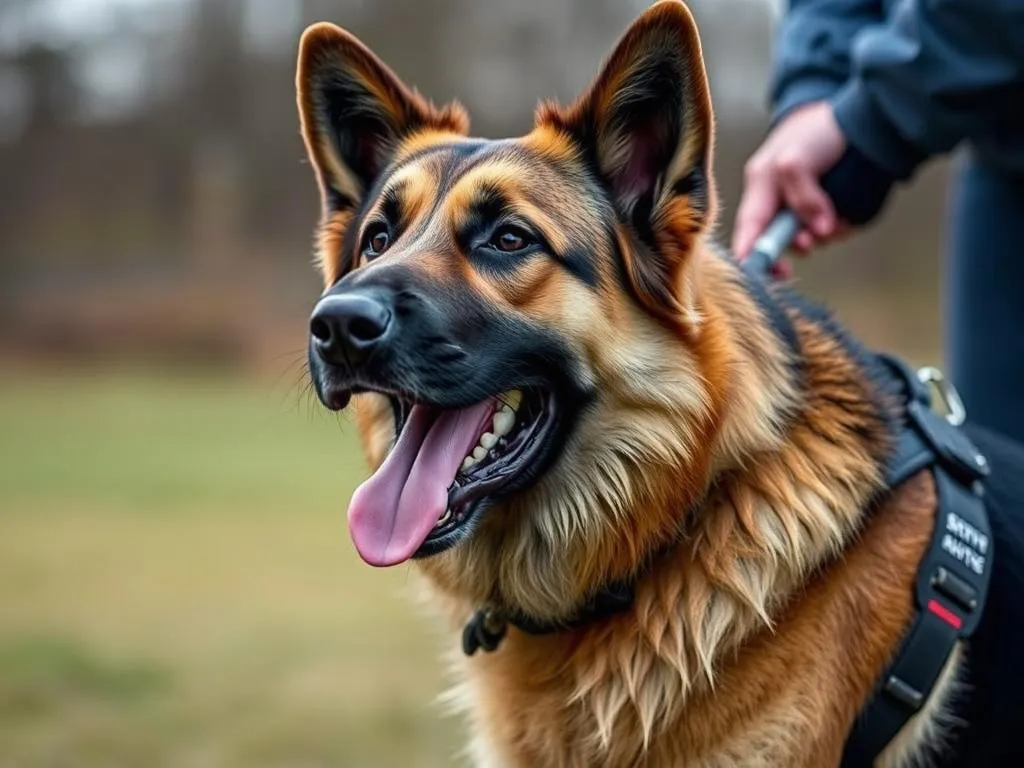
Introduction
Drug detection dogs play a pivotal role in law enforcement and public safety, serving as invaluable assets in the ongoing battle against illegal substances. Their keen sense of smell and ability to be trained for specific tasks make them essential for detecting drugs in a variety of settings, such as airports, schools, and public events. The training process for these dogs is both rigorous and specialized, ensuring that they can perform their duties effectively and reliably. In this article, we will delve into the intricacies of how a drug detection dog is trained, providing insights for dog owners, trainers, law enforcement personnel, and anyone fascinated by canine training.
Understanding Drug Detection Dogs
Definition and Role
A drug detection dog is specifically trained to identify the presence of illegal drugs. Their primary role involves searching for substances like cocaine, heroin, marijuana, and other narcotics. These dogs are deployed in various environments, including:
- Airports: Scanning luggage and passengers for suspicious items.
- Schools: Ensuring a drug-free environment by checking lockers and personal belongings.
- Public Events: Maintaining safety at concerts and festivals by detecting hidden substances.
The effectiveness of these dogs is largely attributed to their exceptional olfactory capabilities, which allow them to detect scents that are undetectable to humans.
Breeds Commonly Used
Not all dog breeds are suitable for drug detection work. The following breeds are commonly chosen for their specific traits:
- German Shepherds: Known for their intelligence and versatility, these dogs are often employed in various law enforcement roles.
- Labrador Retrievers: Their friendly demeanor and high drive for play make them excellent candidates for detection work.
- Belgian Malinois: Similar to German Shepherds but generally lighter and more agile, making them ideal for dynamic environments.
These breeds possess strong work ethics, high energy levels, and exceptional scenting abilities, making them ideal for the rigorous demands of drug detection.
The Importance of Training
Why Training is Crucial
The specialized training that drug detection dogs undergo is essential to ensure their effectiveness and reliability. A well-trained dog can differentiate between various scents and respond appropriately, while a poorly trained dog may miss critical alerts or produce false positives. The consequences of inadequate training can be severe, potentially allowing illegal substances to go undetected or leading to wrongful accusations.
Legal and Ethical Considerations
Drug detection not only involves effective training but also comes with legal and ethical responsibilities. Handlers are required to understand the legal implications of their work, including the proper procedures for searches and seizures. Ethical training practices ensure that dogs are treated humanely and that their training does not involve coercion or harmful methods.
Phases of Drug Detection Dog Training
Pre-Training Preparation
The journey of a drug detection dog begins with careful selection. Factors such as age, temperament, and health are critical in determining whether a dog is suitable for training. Generally, dogs under three years old, with stable temperaments and good health, are preferred.
Equally important is the selection and training of the handler. Handlers must be trained not only in dog handling but also in understanding canine behavior and communication.
Basic Obedience Training
Before diving into specialized scent detection, dogs must first master basic obedience commands such as:
- Sit
- Stay
- Come
- Heel
Establishing a strong bond between the handler and the dog during this phase is crucial. Trust and communication are foundational to the success of subsequent training.
Scent Discrimination Training
Introduction to Scent Work
Dogs possess an extraordinary sense of smell, allowing them to detect odors at incredibly low concentrations. Training begins with an introduction to scent work, where dogs learn to identify and focus on specific smells.
Introducing Drug Scents
Once the dog is comfortable with basic scent work, trainers introduce specific drug scents using scent kits and training aids. These kits typically contain samples of the drugs that the dog will learn to recognize. The process involves rewarding the dog for successfully identifying the scent, reinforcing their learning through positive reinforcement techniques.
Advanced Detection Techniques
As the dog becomes proficient in recognizing drug scents, they advance to more complex detection methods. Training may include:
- Indication Techniques: Teaching the dog to signal the presence of a substance, often by sitting or lying down near the source.
- Searching Techniques: Training the dog to conduct thorough searches in various environments, including vehicles, luggage, and open areas.
Handlers also simulate real-life scenarios where the dog must apply their skills under pressure, helping them prepare for on-the-job situations.
Continuous Training and Maintenance
Training does not end once a dog is certified for drug detection. Ongoing training is vital to maintain skills and ensure that dogs remain sharp. Regular assessments and updates to training methods help adapt to new challenges, such as emerging drug types or changes in detection technology.
Training Environments
Controlled Training Settings
Initially, training occurs in controlled environments, such as specialized training facilities and courses designed to simulate various scenarios. These settings allow for focused skill development without the distractions of real-world situations.
Real-World Scenarios
As dogs progress, it is critical to expose them to real-world environments. This phase of training involves situations like:
- Airports: Dogs navigate through crowds and luggage.
- Concerts: They adapt to loud noises and large groups of people.
- Schools: They learn to search discreetly and effectively.
Real-world training ensures that dogs can perform reliably in diverse and high-pressure situations.
Handler and Dog Team Dynamics
The Role of the Handler
Handlers are integral to the success of drug detection teams. Their responsibilities include:
- Training the dog
- Understanding canine behavior
- Communicating effectively with their partner
A strong bond between handler and dog enhances performance, as trust and mutual understanding allow for better teamwork during searches.
Team Cohesion
Building a cohesive team requires intentional efforts from both the handler and the dog. Training sessions should focus on fostering teamwork, with handlers using positive reinforcement to encourage desired behaviors. Regular practice and shared experiences help solidify the partnership, making the team more effective in real-world scenarios.
Challenges in Training Drug Detection Dogs
Behavioral Issues
During training, various behavioral issues may arise. Common challenges include:
- Distractions: Dogs may become distracted by their environment or other animals.
- Impatience: Some dogs may struggle with waiting or focusing for long periods.
Handlers can address these issues through consistent practice and reinforcement strategies, ensuring that the dogs remain engaged and focused.
Environmental Distractions
Distractions in the environment can significantly affect training outcomes. Handlers should gradually introduce distractions during training sessions to help dogs learn to maintain focus. Techniques such as controlled exposure and gradual desensitization can help dogs become accustomed to various stimuli, ensuring they remain effective in the field.
Success Stories and Case Studies
Notable Drug Detection Cases
There are numerous success stories highlighting the effectiveness of drug detection dogs. For instance, a dedicated Belgian Malinois named Max played a crucial role in intercepting a large shipment of illegal narcotics at a major airport, showcasing the significant impact that trained dogs can have on public safety.
Testimonials from Handlers
Handlers often share their positive experiences working with trained dogs, emphasizing the bond and communication developed over time. One handler stated, “My dog and I are a team; he knows what I need, and I trust him completely to do his job.”
Conclusion
The training of drug detection dogs is a multifaceted process that requires dedication, skill, and a deep understanding of canine behavior. From the initial selection of dogs to the complex training phases they undergo, each step is crucial to developing effective and reliable detection teams. Understanding how a drug detection dog is trained not only sheds light on the commitment of trainers and handlers but also reinforces the importance of responsible training practices that prioritize the well-being of these remarkable animals.









